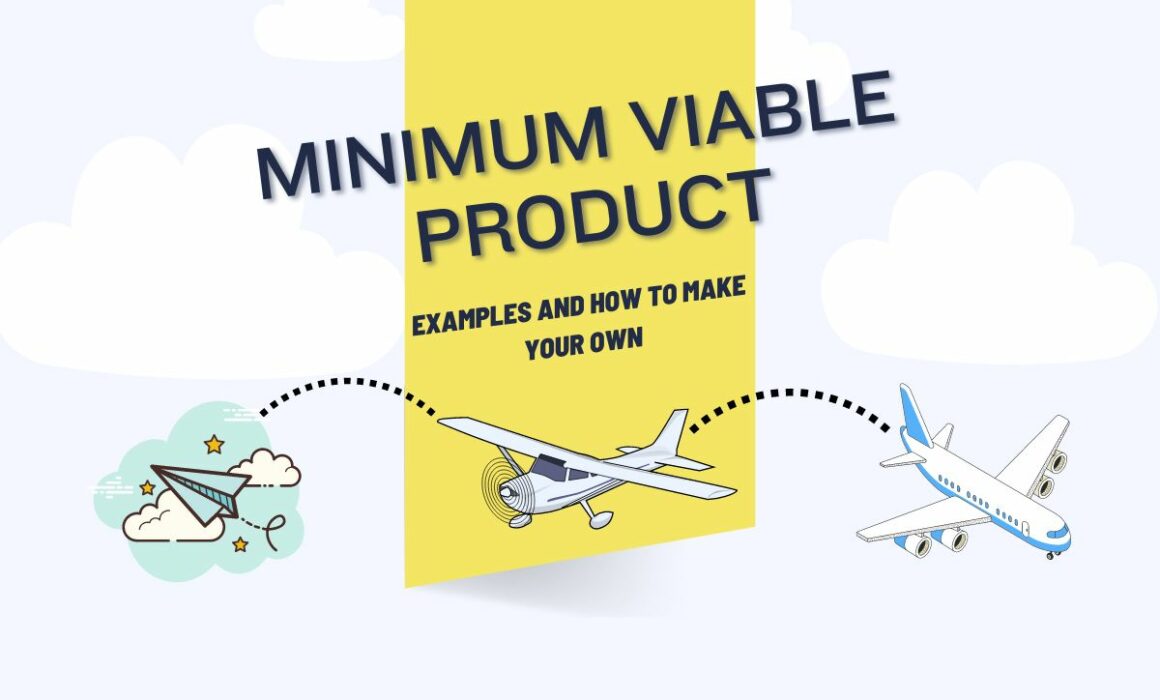Minimum Viable Product Examples and How to Make Your Own
In today’s competitive landscape, merely offering a decent product is no longer enough to captivate a target audience. It must have a certain level of innovation or ingenuity. Alas, turning new ideas or concepts into reality can be expensive, not to mention there’s no guarantee of profit. But that’s why minimum viable product examples exist.
Join us as we look at several minimum viable product examples and explore how you can craft your own. Let’s start with the minimum viable product definition.
Table of Contents
- What is a minimum viable product (MVP)?
- Real-world minimum viable product examples
- What is the purpose of minimum viable products?
- What makes a good minimum viable product?
- How to build an MVP in 6 steps
- Final words: minimum viable product examples
- Machine Learning In Finance: 12 Essential Applications
- How To Create Interactive Compliance Training For Bank Employees
- How Fintech Apps Are Using Gamification To Increase User Engagement
- Top Gamification Companies for Employee & Customer Engagement
What is a minimum viable product (MVP)?

A minimum viable product is an iteration with just enough features to attract customers. The first iteration is feasible or usable, hence the name.
Its fundamental purpose is to determine what customers feel about the product.
If the MVP is well-received, you’ll gain more confidence in allocating a bigger budget for its development. Furthermore, investors are more likely to fund that particular project.
Similarly, if the MVP got a negative reception, it would signify a lacklustre idea. In this case, the next move would be to improve on it or scratch the business idea altogether.
The implementation of MVPs in the product development cycle is a well-known strategy.
In fact, you’ll find that many successful companies you know and love have minimum viable product examples of their own.
Real-world minimum viable product examples
#1. Amazon
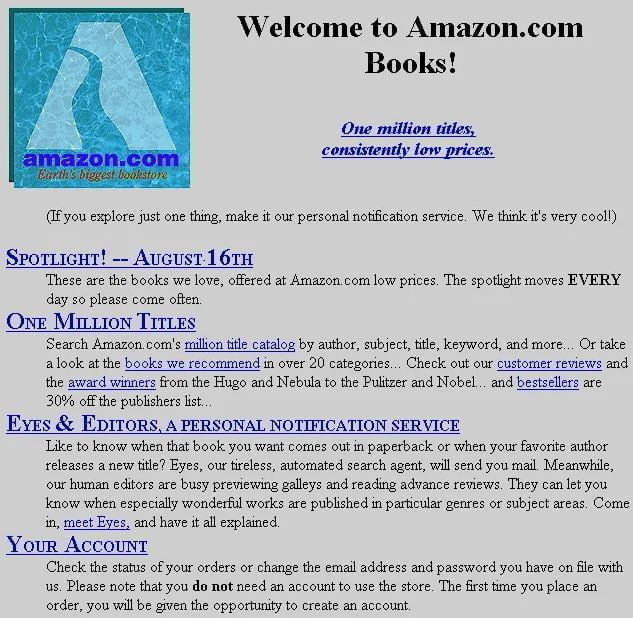
Source: Amazon
Amazon is the result of Jeff Bezos’ vision of An Everything Store, offering a variety of items. However, he cannot achieve this vision with a limited budget and workforce.
As such, Amazon initially offered only one type of product—books.
Its minimalism doesn’t end there, however. During its early days, whenever Amazon received an order, Jeff Bezos would purchase the books himself from the distributors.
He would then ship them to the customer once he received the books.
In short, on top of offering only one item type to customers, Amazon didn’t have any automation or features back then. That is the minimum viable product of Amazon.
Despite that, customers realised the potential of this idea. And ultimately, that’s the purpose of minimum viable product examples.
#2. Facebook
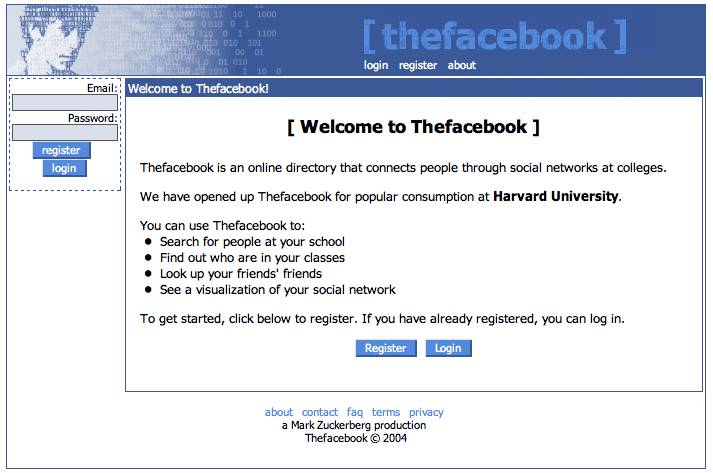
Source: Facebook
Another likewise famous origin story is Facebook’s.
The idea behind Facebook is to offer these services (as noted by their original website):
- Search for people at your school
- Find out who is in your classes
- Look up your friend’s friends
- See a visualisation of your social network
At first glance, you’d assume it’s a product that would be released to numerous schools simultaneously. But that’s not how the minimum viable product concept works.
Somewhat, Mark Zuckerberg and his friends restricted the site to Harvard students.
It then went on to become popular, as it gained numerous investors in three years. And so, the MVP fulfilled its purpose of attracting investors and users.
#3. Dropbox
Dropbox is the most unique among these minimum viable product examples.
That’s because, rather than an actual product, Dropbox’s MVP is a video explaining the idea behind the supposed product. It is quite literally the most minimalistic MVP.
Regardless, the video still achieved what any other MVP is supposed to—it validated the idea. Not to mention it was able to create hype around the product.
This was evident by the massive increase in the number of people on their waiting list after the video’s release.
This event gave the development team a confidence boost, as they now know that Dropbox has a sizable market.
#4. Airbnb
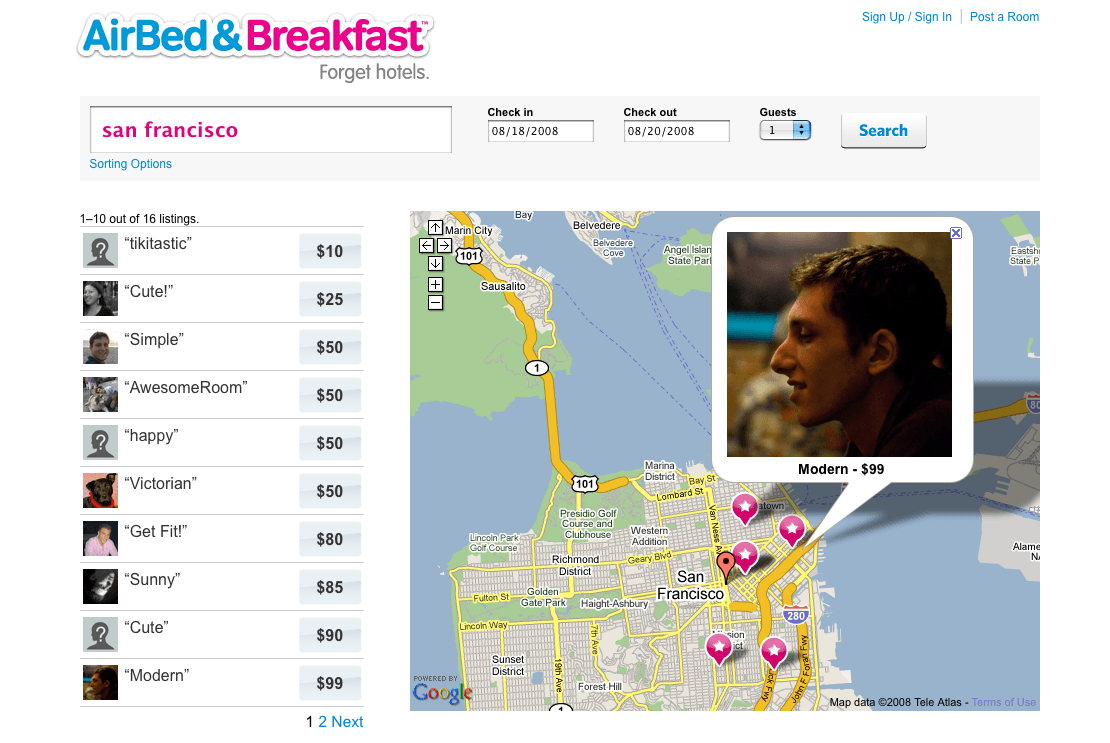
Source: Airbnb
Airbnb’s minimum viable product follows the same concept as Facebook’s.
Rather than creating the comprehensive booking platform that they have now, the “product” is just a single essential website.
It consists of pictures of their apartment and has a specific target—soon-to-be attendees of a sold-out conference near the area.
Needless to say, the site generated initial clients, three of which wanted to book the place. These three even agreed to pay $80 each.
With that site and some photography work, the founders validated their product idea. And like most of the minimum viable product examples here, they have improved since then.
Now, one may argue that these minimum viable product examples worked not because of the implementation of MVP. Instead, it’s because the ideas themselves are innovative.
That might be true, but there’s no denying the benefits you’ll miss by not using an MVP.
Look at Juicero, for example.
Juicero: a failed product
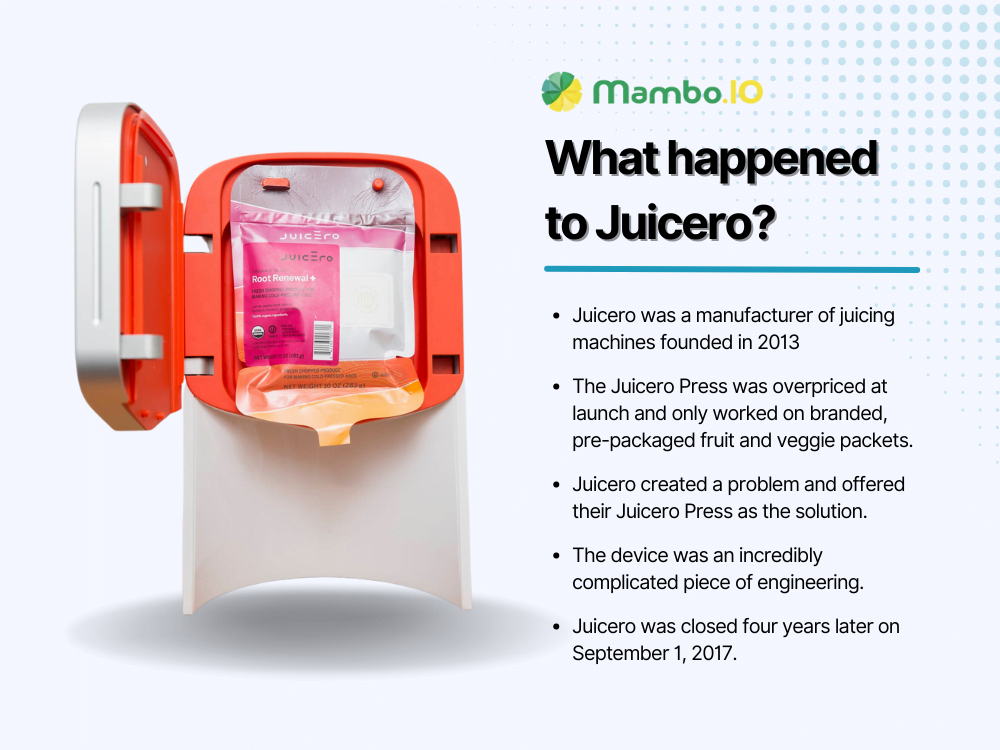
Juicero is a company that revolves around its product—Juicero Press. It’s a juice press that automatically squeezes single-serving packets of fresh fruits and vegetables.
At first, the idea seemed promising. However, only a short time after its launch, customers found that using the expensive press yields the same results as hand squeezing the packets.
In short, there’s no need for a juice press, much less one that costs $699.
Had Juicero employed an MVP, they would have discovered that their product failed to address a genuine need. They didn’t, as they immediately offered it at the total price.
In addition, the juice press didn’t feature just the core components.
It also offered WiFi connectivity and QR code detection upon its release, which only added unnecessary complexities. Now, Juicero is a defunct company.
So, while an MVP is not an obligatory component in product development, you must recognise its significance. After all, it offers invaluable benefits that you cannot dismiss.
What is the purpose of minimum viable products?
A minimum viable product offers numerous benefits to a company.
However, each MVP is typically made for a specific reason. One iteration, for example, might be for customer outreach, while another would be made to test its viability.
These reasons would often be one, or a combination, of the following:
- Test the validity of a product idea without spending a fortune.
- Attract investors and other funding opportunities.
- Gain fans that would support the product on its release.
- Get a competitive edge by entering the market earlier than competitors.
- Collect user feedback and identify potential flaws and issues to improve the final product.
- Find the right audience for the final product.
- Validate the company’s entire business model, such as whether the pricing structure or revenue streams are viable in the market.
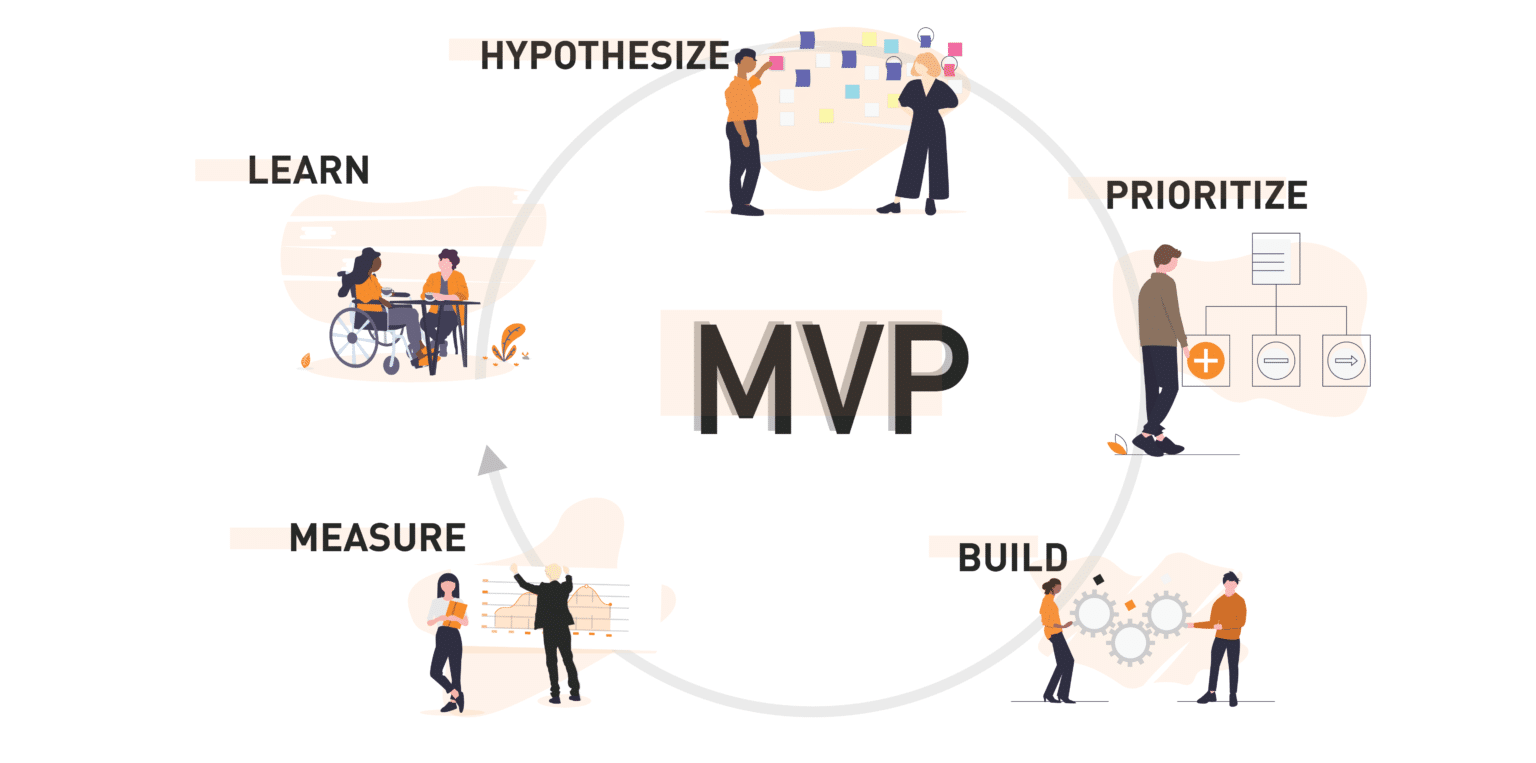
Source: Manta
But as beneficial as it may be, there’s a clear distinction between a good and bad MVP. One would offer these benefits, while the other won’t.
What makes a good minimum viable product?
An MVP can take many forms, as shown in the aforementioned list of MVP examples. However, it must always have five key components.

Here’s a look at these components and their corresponding minimum viable product example that failed to incorporate them.
#1. Core functionality
Overview
This component pertains to the third letter of MVP—product.
Every product must have a core functionality. Otherwise, there wouldn’t be a product. It cannot be just any functionality, however. It must be a functionality that fulfils a need.
Example
The Fire Phone was Amazon’s attempt to enter the smartphone market. They emphasised its 3D display, which supposedly provides a unique experience.
It was a commercial failure, as Amazon discontinued the device only a year later.
Why? Perhaps because its core feature, the 3D display, didn’t solve a problem.
#2. Minimalistic design
Overview
This component pertains to the first letter of MVP—minimum.
The concept of MVP is to allow companies to create a “viable” product quickly and cheaply.
A minimalistic design is critical to doing that. It also prevents users from getting distracted from the core functionality, which happens more commonly than you’d think.
This doesn’t only refer to the UI or physical appearance of the MVP.
Rather, it relates to the overall structure of the MVP. Dropbox’s video, for example, didn’t have a UI. But we can argue that the video followed a minimalistic approach.
Example
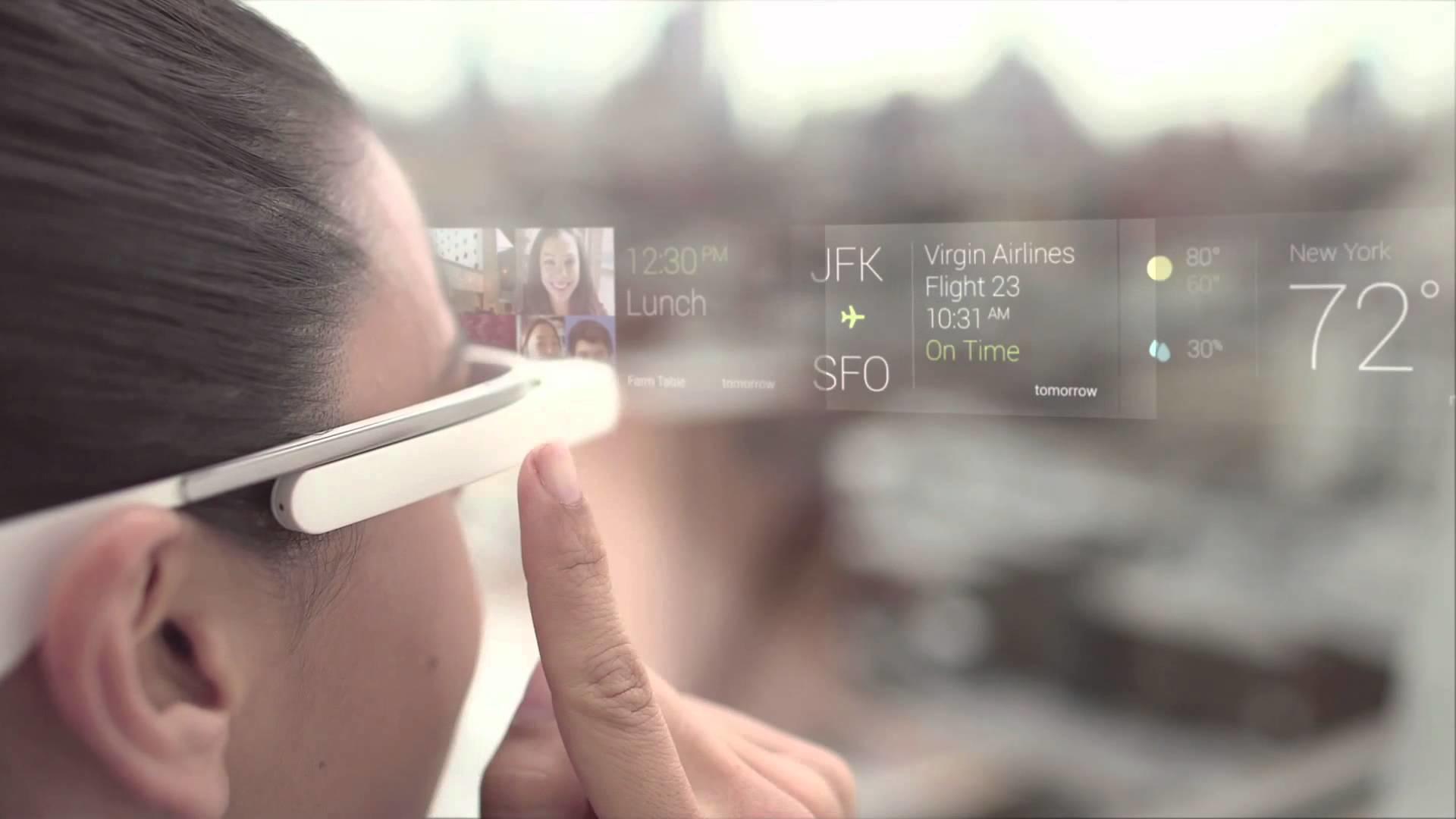
Source: Google Glass
Google Glass is a pair of glasses that aims to provide an augmented reality experience. It had a core functionality, but it wasn’t minimalistic.
It was bulky and conspicuous, so early adopters criticised its intrusive appearance. Google Glass also had a built-in camera, which users believed violated their privacy.
Lastly, the target market wasn’t minimised, as Google Glass was marketed to everyone.
Compare that to the most recent Google Glass, which targeted workers. It’s no longer an entire headpiece but a device you can clip on glasses or safety goggles.
#3. Iterative approach
Overview
This component pertains to the second letter of MVP—viable.
An iterative approach refers to building and refining a project or product.
In this context, an MVP that follows an iterative approach is a product already undergoing several improvements. That is to say. It’s not the first-ever iteration.
Instead, it’s the first iteration that is viable. Before you release your MVP, there must already be a couple of other iterations made before that.
It must be an iteration that has been improved based on market insights, user preferences, and user testing.
Example
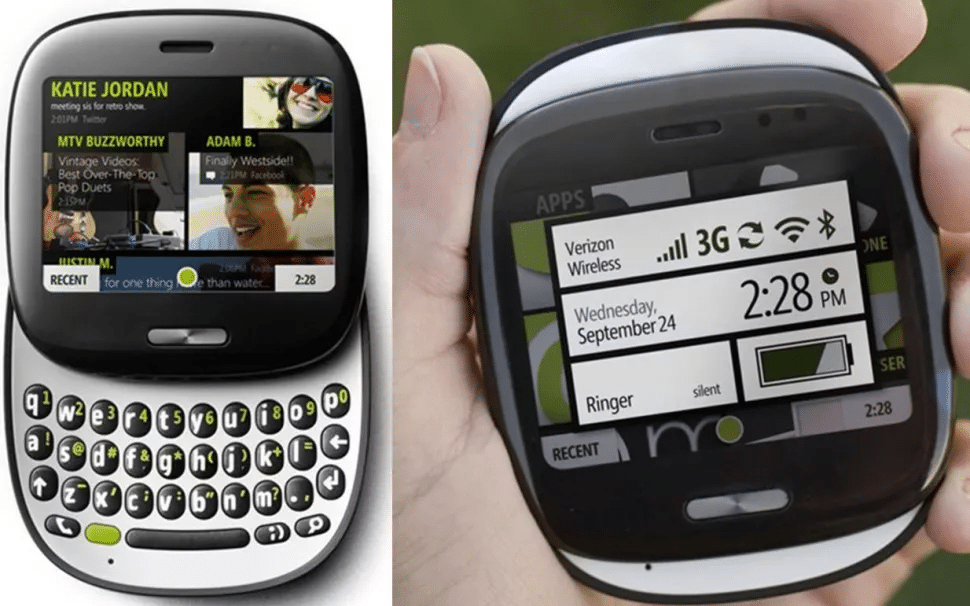
Source: Microsoft
Microsoft Kin is a line of mobile phones that primarily targets people ages 15 to 30. The product line could have been longer-lived due to poor sales.
This is mostly because it was released without consideration of iterative MVP product development.
To be exact, the device seems to have skipped essential refinements that could have addressed critical issues.
Its users encountered issues like an “unintuitive” interface, usability problems, and app integration. These are issues that would have been solved with an iterative approach.
#4. Measurable metrics
Overview
Every product will have corresponding metrics that evaluate its success. For instance, you can easily measure the success of the Dropbox video by looking at its views.
These metrics also allow you to determine a product’s value proposition, whether it’s worth this much or that much.
The lack of measurable metrics would undermine your ability to advertise the product.
It also leaves you with a lot of guesswork, as you won’t know precisely how significant its market demand is, if there is any, in the first place.
Example

Source: steemit
CueCat is a barcode scanner that allows consumers to scan barcodes in print advertisements like magazines. In doing so, they can receive the corresponding online content on their computer.
It’s quite an innovative idea, so CueCat garnered much praise from magazines like BusinessWeek and Wired during its initial launch.
Unfortunately, the device had hostile reception among the actual users.
CueCat, however, wasn’t aware of this and proceeded by manufacturing millions of the device to give it for free. As a result, CueCat is now known as an expensive failure.
#5. Scalability
Overview
Although MVP is the scaled-down version of a final product, it still requires scalability consideration.
You must assume that your product will get famous and make adjustments based on the possibility of future growth.
Doing so would save time and effort when expanding the product for subsequent iterations.
Example
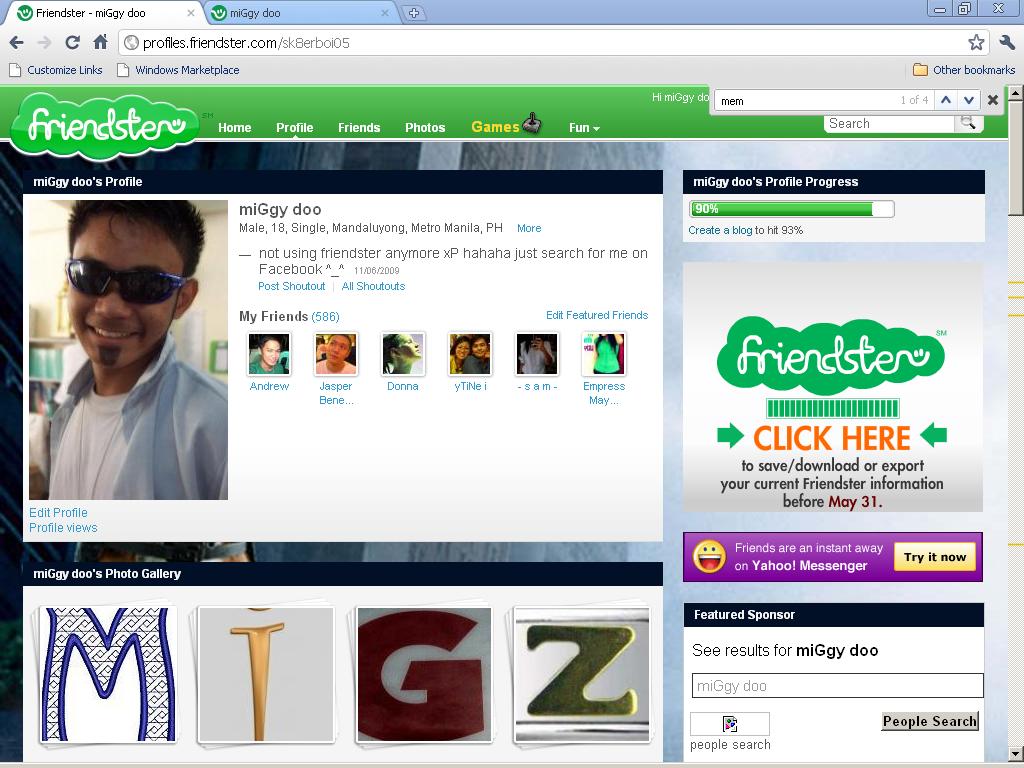
Source: Failory
Friendster is a pioneer in the social networking space. It attracted a large user base and had rapid growth, which was its downfall.
As the user base increased, it could not handle the growth and needed to scale its infrastructures.
As a result, Friendster faced frequent outages, slow response times, and significant performance issues. These then led to its decline, and you know how that ended.
The lack of even one of these key components can mean the eventual doom of your product. The following guide should help avoid this common pitfall.
How to build an MVP in 6 steps
#1. Identify the problem you want to solve
As stated earlier, the core functionality must fulfil a specific customer need.
So, begin by identifying the specific pain point or problem you intend to solve. You may have to conduct market research to understand the problem truly.
#2. Define your target audience
Define your target audience by their characteristics, behaviours, preferences, and, most importantly, demographics.
Understand how their pain points and needs correlate to the problem you previously identified and intended to solve.
#3. Craft a list of features for the MVP
Create a list of features based on the problem and your chosen target audience. These should address the core problem and provide value to your target market.
Keep these features to the minimum, as they may distract your potential users from the core functionality.
If you create a nicely-made website, for instance, it might be what attracts the user’s attention rather than its functionality.
Of course, that’s not to say it should be a single feature MVP. That, too, can negatively impact its effectiveness.
#4. Build the MVP
At this point, you can start building the MVP, or at least the first iteration of it. Again, keep the core features and design elements minimal to avoid unnecessary complexities.
You can either build it from scratch or create a classic piecemeal MVP—a type of MVP made using existing tools. When creating a gamified platform, for instance, you can incorporate game features with the help of Mambo and their APIs.
#5. Test the product with real users
Release the first iteration of your MVP to real users, preferably ones in your target market. Observe how they interact with the product and collect their feedback.
This step helps validate your assumptions regarding the market demand for the product and identify areas for improvement.
#6. Gather feedback and make iterations
With data in hand, continue refining the MVP and creating subsequent iterations, each being better than the last.
A case study: Facebook
Facebook provides an inspiring case study of how these six steps of building an MVP can lead to success.
- Step #1 – Mark Zuckerberg and his co-founders identified a lack of an inclusive online platform that connects people.
- Step #2 – They defined their target audience as individuals looking for a digital space to connect with friends and family.
- Step #3 – The initial version of Facebook focused on features like adding friends, social media posts, sharing photos, and online messaging.
- Step #4 – The MVP of Facebook was called Thefacebook, and it initially targeted college campuses. It had a simple interface, which established the idea’s potential when it still became popular despite its lack of pizazz.
- Step #5 – Facebook continued to test their product, even expanding its user base to other universities. They gained more valuable insights by offering the product to a different user demographic.
- Step #6 – Facebook continuously improved the platform through the gathered feedback. These improvements include the addition of event creation, News Feed, and photo tagging, to name a few.
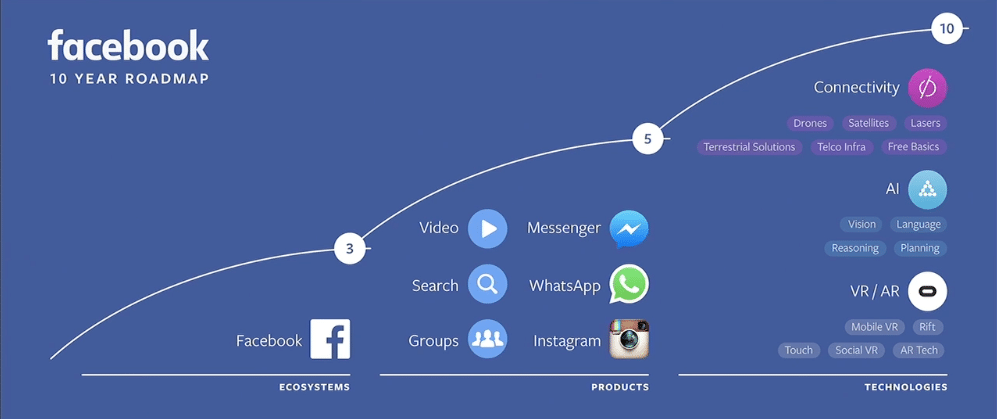
Source: Facebook
By following these six steps systematically, Facebook was able to evolve from a dorm project to a social media giant.
Final words: minimum viable product examples
That’s often the case in the product development process. You have yet to build a user base and have the resources to create the product. A minimum viable product overcomes these hurdles while also offering benefits.
However, despite its emphasis on minimalism, an MVP is still a product at its core. It must still create a satisfactory user experience, much like any other product.
In this case, Mambo’s gamification solution becomes a valuable asset. Book a demo now and learn how to showcase your platform’s core functionality while creating an interactive user experience.
Download your free
“Gamification Guide”
Get your PDF now and start transforming your approach to digital engagement!
Latest Posts
Machine Learning In Finance: 12 Essential Applications
The impact of machine learning on finance is significant. Thanks to this technology, financial institutions are now equipped to make efficient decisions. Through the analysis of data sets, machine learning […]
How To Create Interactive Compliance Training For Bank Employees
Banking compliance training isn’t just another task. It’s the stage where everything else performs. Banks must navigate a myriad of regulations and laws. After all, this is a trust-driven, high-stakes […]
How Fintech Apps Are Using Gamification To Increase User Engagement
Discover how gamification in fintech is revolutionizing financial engagement, making banking fun & boosting user loyalty.
